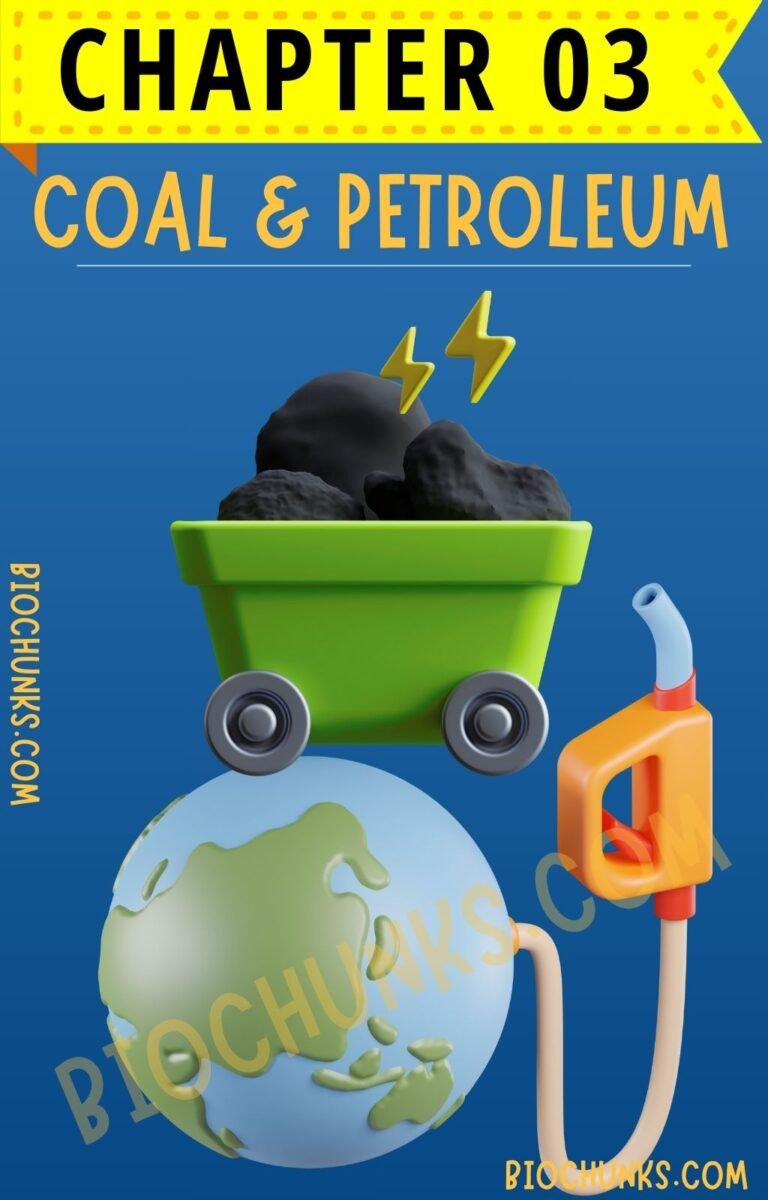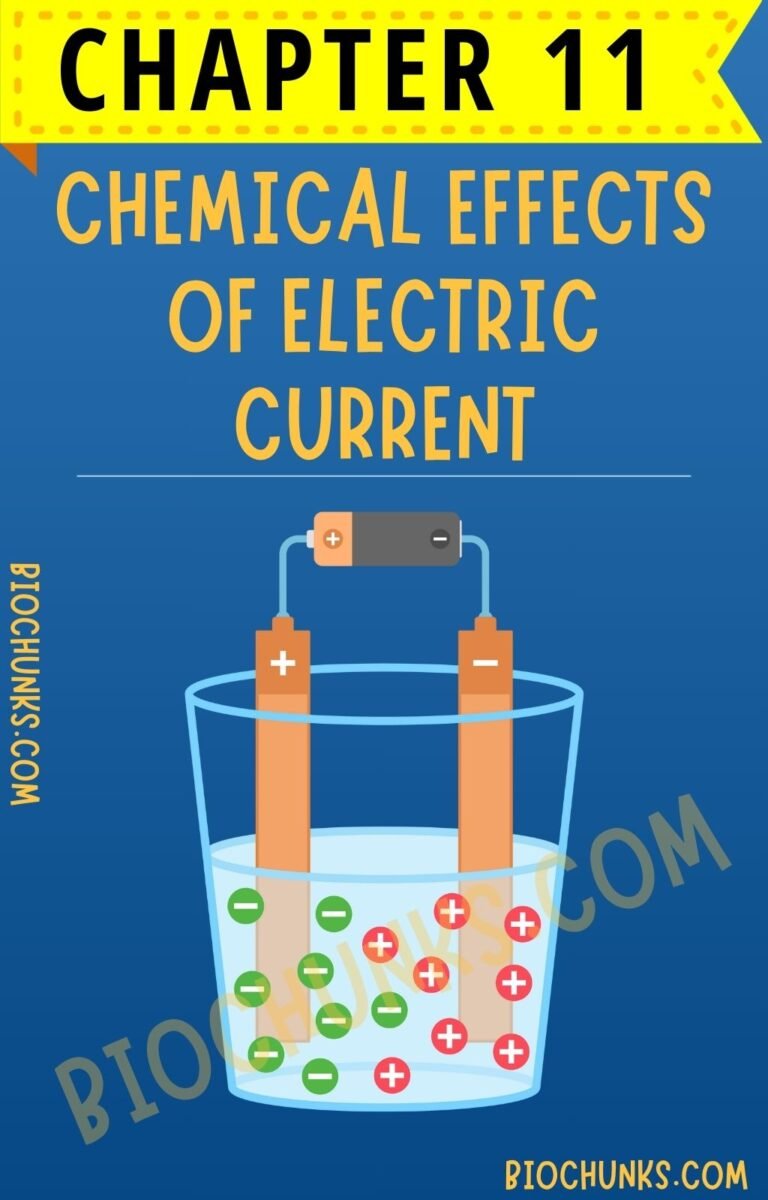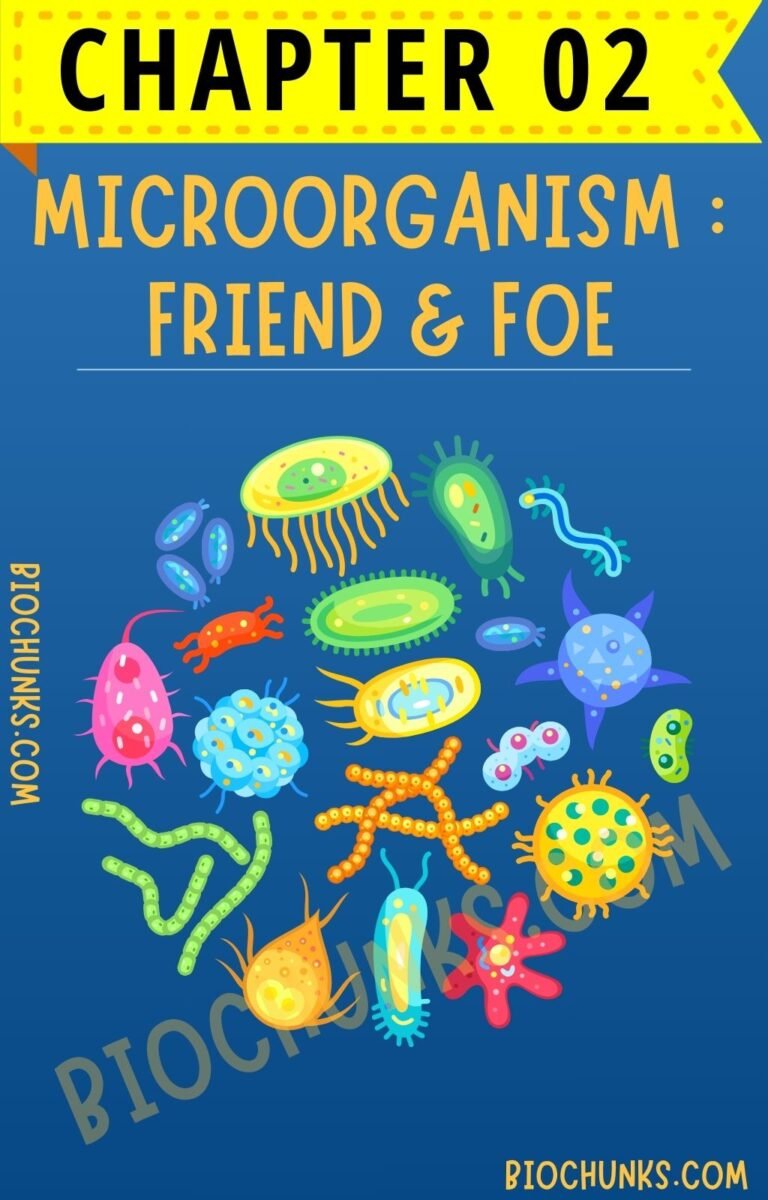Table of Contents (tap to open/close)
1. Agricultural Practices
Introduction:
- Before 10,000 B.C.E., people lived as nomads, moving in search of food and shelter. With time, they settled down and began farming, giving rise to agriculture.
- This chapter, Crop Production and Management, focuses on various agricultural practices including crop types, soil preparation, sowing, fertilization, irrigation, weed protection, harvesting, storage, and food from animals.
Crops:
- Crops are plants of the same kind grown at one place on a large scale. For example, a wheat crop means all the plants in a field are wheat.
- Crops include cereals, vegetables, and fruits.
| Plants (Crops) | e.g. |
|---|---|
| Cereals | Wheat, Rice, Barley, Maize (Corn), Millets, Oats |
| Vegetables | Potato, Tomato, Onion, Cabbage, Carrot |
| Fruits | Apple, Banana, Orange, Mango |
Types of Crops
2 main categories of crops based on the season they grow.
(1) Kharif Crops:
- Sown during the rainy season (June to September).
- Examples – paddy, maize, soyabean, groundnut, and cotton.
(2) Rabi Crops:
- Grown in the winter season (October to March).
- Examples – wheat, gram, pea, mustard, and linseed.
Summer Crops:
- Pulses and vegetables are grown during the summer in various regions.
2. Basic Practices of crop Production:
1. Preparation of Soil
2. Sowing of seeds
3. Adding Manure and Fertilizers
4. Irrigation
5. Protecting from Weeds
6. Harvesting
7. Storage
3. Preparation of Soil
- Before growing a crop, preparing the soil is the first important step in agriculture. It involves turning and loosening of soil.
Benefits of Loosening Soil
- Helps roots penetrate deep and breathe easily.
- Promotes growth of earthworms and microbes, which help further loosen soil and add humus.
- Nutrients from decomposed dead plants and animals are released into the soil.
- Brings nutrient-rich soil to the top, supporting plant growth.
Tilling or Ploughing
- The process of loosening and turning the soil.
- Done with a plough made of wood or iron.
- If soil is dry, it may need watering before ploughing.
- Breaks big clumps of soil (crumbs).
Levelling the Field
- Important for sowing and irrigation.
- Done with a leveller.
- Manure is sometimes added before tilling to mix well with the soil.
Moistening Before Sowing
- The soil is moistened before sowing seeds for easy germination and growth.
Agricultural Implements
- Before sowing seeds, it’s important to break soil clumps for better yield, and this is where various tools come into play. These tools make soil preparation easier, allowing farmers to effectively cultivate crops and improve yield.
Main Tools for Soil Preparation:
(a) Plough
- Used since ancient times for tilling, adding fertilisers, removing weeds, and turning soil.
- Made of wood, drawn by bulls, horses, or camels.
- Contains a strong triangular iron strip called a ploughshare.
- Main part is a long log of wood called a ploughshaft, with a handle at one end and attached to a beam on the bulls’ necks.
- Nowadays, iron ploughs are more common.

(b) Hoe
- Simple tool for removing weeds and loosening soil.
- Long rod of wood or iron with a strong, broad, bent iron plate acting as a blade.
- Pulled by animals.
(c) Cultivator
- Tractor-driven tool used for ploughing.
- Saves labour and time.
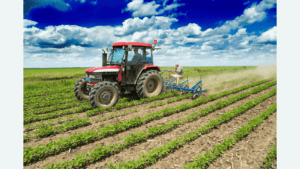
4. Sowing Seeds
Importance of Sowing
- Crucial part of crop production.
- Use good quality, clean, healthy seeds of a high-yield variety.
Selection of Seeds
Activity 1.1
Fill a beaker half with water, add wheat seeds, and stir.
- Observation: Seeds that float are lighter and usually damaged because they are hollow.
- Conclusion: Floating seeds are separated from good, healthy seeds.
Farmers choose seeds carefully, preferring those that promise high yield and are clean and healthy.
Tools for Sowing:
- Traditional Tool:
- Shaped like a funnel.
- Seeds pass through sharp-ended pipes that pierce the soil and place seeds.
- Seed Drill:
- Used with tractors.
- Sows seeds uniformly at equal distance and depth.
- Ensures seeds are covered by soil, protecting them from birds.
- Saves time and labour.
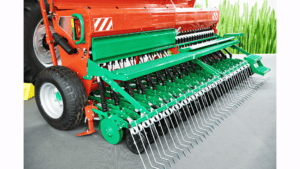
- By Hand:
- seeds can be sown manually by hand also.
Importance of Seed Spacing
- Prevents overcrowding.
- Ensures plants get enough sunlight, nutrients, and water.
- Sometimes, extra plants need to be removed to prevent overcrowding.
Additional Method
- Nursery Method: Seeds of plants like paddy are first grown in a nursery.
- Transplanted to the field manually when they grow into seedlings.
- Used for some forest and flowering plants as well.
5. Adding Manure and Fertilisers
Importance of Manure and Fertilisers?
- Provide essential nutrients for plant growth.
- Continuous cultivation depletes soil nutrients, making manuring necessary.
Manure
- Definition: Organic substance from decomposed plant and animal waste.
- Production process: Farmers allow waste to decompose in pits using microorganisms.
Activity 1.2:
- Germinate moong or gram seeds and plant in three glasses with different treatments:
- Glass A: Soil + cow dung manure
- Glass B: Soil + urea
- Glass C: Soil only
- Observe growth over 7-10 days to see the effect of different treatments.
Fertilisers
- Definition: Chemical substances rich in specific nutrients.
- Examples: Urea, ammonium sulphate, super phosphate, potash, NPK.
- Advantages: Help achieve better crop yields (e.g., wheat, paddy, maize).
- Disadvantages: Excessive use reduces soil fertility and causes water pollution.
- Solution:
- Farmers encouraged to use organic manure or fallow fields between crops to maintain soil fertility.
- Solution:
Comparing Manure and Fertilisers
| S. No. | Aspect | Fertiliser | Manure |
|---|---|---|---|
| 1 | Definition | Man-made inorganic salt. | Natural substance obtained from decomposed cattle dung and plant residues. |
| 2 | Production | Prepared in factories. | Can be prepared in the fields. |
| 3 | Humus Content | Does not provide any humus to the soil. | Provides a lot of humus to the soil. |
| 4 | Nutrient Content | Very rich in plant nutrients like nitrogen, phosphorus, and potassium. | Relatively less rich in plant nutrients. |
| 5 | Soil Improvement | – | Improves soil texture and water retention. |
| 6 | Microbial Activity | – | Increases soil porosity and friendly microbes. |
| 7 | Nutrient Enhancement | Provides specific nutrients quickly. | Enhances soil nutrient content. |
Soil Replenishment Methods
- Crop Rotation:
- Alternating different crops (e.g., legumes and wheat) helps replenish soil nitrogen.
- Organic Manure:
- Preferred over chemical fertilisers for sustainable farming.
Benefits of Manure
- Enhances water holding capacity.
- Makes soil porous for better gas exchange.
- Increases friendly microbes.
- Improves soil texture.
6. Irrigation
Importance of Water
- All living beings need water to live.
- Essential for proper growth and development of plants.
- Absorbed by plant roots along with minerals and fertilisers.
- Plants contain nearly 90% water.
- Necessary for seed germination and nutrient transport.
- Protects crops from frost and hot air.
- Maintains soil moisture for healthy crop growth.
What is Irrigation?
- The supply of water to crops at regular intervals.
- Time and frequency vary based on crop, soil, and season.
- Higher frequency in summer due to increased evaporation.
Sources of Irrigation
- Wells, tubewells, ponds, lakes, rivers, dams, and canals.
Traditional Methods of Irrigation
- Use water from wells, lakes, and canals.
- Involve cattle or human labour.
- Cheaper but less efficient.
- Methods include:
- Moat (Pulley-system)
- Chain pump
- Dhekli
- Rahat (Lever system)
- Pumps run on diesel, biogas, electricity, or solar energy are commonly used.
Modern Methods of Irrigation
- Use water economically.
- Main methods:
- Sprinkler System:
- Useful on uneven land with limited water.
- Perpendicular pipes with rotating nozzles sprinkle water like rain.
- Ideal for lawns, coffee plantations, and various crops.
- Drip System:
- Water falls drop by drop directly near the roots.
- Best for fruit plants, gardens, and trees.
- No water wastage, beneficial in water-scarce regions.
- Sprinkler System:
7. Protection from Weeds
What are Weeds?
- Weeds: Undesirable plants that grow naturally with the crop.
- Compete with crop plants for water, nutrients, space, and light.
- Can interfere with harvesting and may be poisonous.
Importance of Weeding
- Weeding: The removal of weeds.
- Necessary because weeds affect crop growth.
Methods of Weeding
- Tilling:
- Done before sowing.
- Uproots and kills weeds, which dry up and mix with the soil.
- Manual Removal:
- Physical removal by uprooting or cutting weeds close to the ground.
- Done using tools like a khurpi.
- Seed drills can also be used to uproot weeds.
- Chemical Control:
- Using weedicides (e.g., 2,4-D) to kill weeds.
- Weedicides are diluted with water and sprayed on fields.
- Spraying is done during the vegetative growth of weeds before they flower and produce seeds.
Safety Measures
- Farmers should cover their nose and mouth with a cloth while spraying weedicides to protect their health.
Key Points
- Best time for weeding: Before weeds produce flowers and seeds.
- Careful use of weedicides: Important to avoid health risks.
8. Harvesting
What is Harvesting?
- Harvesting is the process of cutting or pulling out mature crops.
- Crops are pulled out or cut close to the ground.
- It usually takes 3 to 4 months for cereal crops to mature.
How is Harvesting Done?
- Manually: Using a sickle or by hand, especially on small farms.
- By Machine: Using a harvester machine, which cut and collect crops.
Threshing
- After harvesting, grain seeds need to be separated from the chaff.
- This process of separating grain from chaff, is called threshing.
- Machine Used: Combine (acts as both harvester and thresher).
- Small farmers use a process called winnowing to separate grain and chaff.
Important Note (Post-Harvest Practices)
- Sometimes, after harvesting, leftover stubs in the field are burnt by farmers, which can cause pollution and fire hazards.
Harvest Festivals
- After months of hard work, harvest time is joyful for farmers.
- Farmers feel happy and proud seeing their golden fields of grain.
- Harvest time is celebrated with enthusiasm and happiness across India.
- Special Harvest Festivals:
- Pongal
- Baisakhi
- Holi
- Diwali
- Nabanya
- Bihu
9. Storage of Produce
Importance of Storage:
- To keep harvested grains safe from moisture, insects, rats, and microorganisms.
- Freshly harvested grains have high moisture content.
- If stored without drying, grains can spoil or be attacked by pests or become unfit for use.
Drying Before Storage:
- Grains are dried in the sun to reduce moisture.
- Drying prevents insect pests, bacteria, and fungi attacks.
Storage Methods
- For Small Quantities: Jute bags or metallic bins.
- For Large Quantities: Silos and granaries protect grains from pests like rats and insects.
- Special Tips –
- Dried neem leaves are used for storing food grains at home.
- Large quantities of grains in godowns require chemical treatments to protect them from pests and microorganisms.
Conclusion:
- Proper storage techniques are essential to maintain the quality of harvested grains and prevent spoilage, ensuring their usability over time.
10. Food from Animals
- Animals, like plants, offer various food options for us.
- Coastal residents often include fish as a significant part of their diet.
Animal Care and Husbandry:
- Just like crop production involves steps, rearing animals needs proper food, shelter, and care.
- Large-scale management of animals for food production is termed animal husbandry.
- Fish
- Fish is good for health.
- Cod liver oil from fish is rich in vitamin D.
- Fish
Chapter Summary:
- To provide food for our growing population, we need to adopt agricultural practices.
- Same kind of plants cultivated at a place constitute a crop.
- In India, crops are categorized into two types based on seasons: rabi and kharif crops.
- Preparing soil by tilling and levelling is necessary. Ploughs and levellers are used for this.
- Sowing seeds at appropriate depths and distances gives good yield.
- Good variety seeds are selected and sown using seed drills.
- Soil needs replenishment and enrichment with organic manure and fertilizers.
- Use of chemical fertilizers has increased with new crop varieties.
- Supply of water to crops at appropriate intervals is called irrigation.
- Weeding involves removing unwanted plants called weeds.
- Harvesting is cutting the mature crop manually or by machines.
- Separation of grains from chaff is called threshing.
- Proper storage of grains protects them from pests and microorganisms.
- Food is also obtained from animals, and rearing them is called animal husbandry.
keywords
- AGRICULTURAL PRACTICES
- ANIMAL HUSBANDRY
- CROP
- FERTILISER
- GRANARIES
- HARVESTING
- IRRIGATION
- KHARIF
- MANURE
- PLOUGH
- RABI
- SEEDS
- SILO
- SOWING
- STORAGE
- THRESHING
- WEEDS
- WEEDICIDE
- WINNOWING







